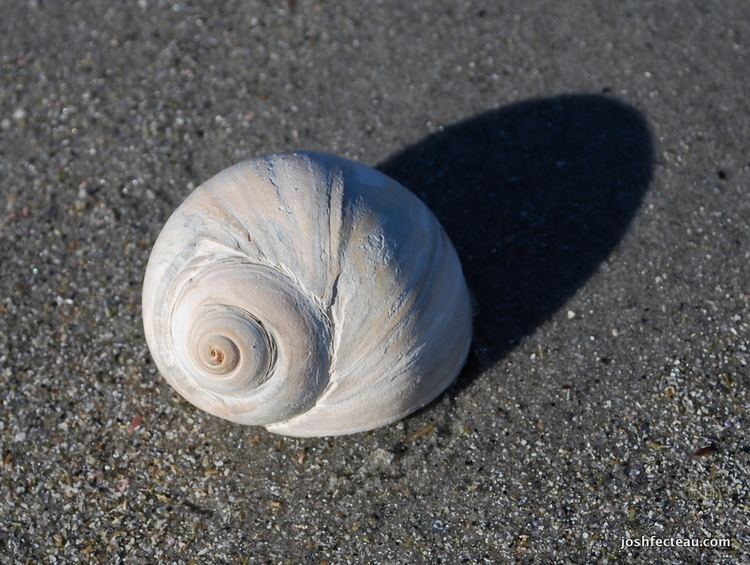Superfamily Naticoidea Higher classification Polinices | Scientific name Polinices heros Rank Species | |
 | ||
Similar Naticidae, Gastropods, Euspira, Molluscs, Polinices | ||
Northern moonsnail euspira heros p5180427
The northern moon snail, scientific name Euspira heros (previously known by the scientific name Lunatia heros), is a species of large sea snail, a predatory marine gastropod mollusk in the family Naticidae, the moon snails (U.S.) or necklace snails (U.K.).
Contents
- Northern moonsnail euspira heros p5180427
- Northern moonsnail euspira heros p5180358
- Distribution
- Habitat
- Shell description
- Moon snail predation
- References
This large snail is rather uncommon intertidally, but is much more common subtidally. This species, like all moon snails, feeds voraciously on clams and other snails.
Northern moonsnail euspira heros p5180358
Distribution
The distribution of Euspira heros falls within the range: 51.5°N to 33°N; 76°W to 65°W. This western Atlantic species occurs in
There is a sibling species on the Pacific coast of North America: Neverita lewisii (Gould, 1847) (synonym: Lunatia lewisii (Gould, 1847) )
Habitat
Euspira heros lives on sand substrates in bathyal, infralittoral and circalittoral parts and estuary.
The minimum recorded depth is 0 m. and maximum recorded depth is 435 m.
Shell description
The shell of this species is globular and can, under the right conditions, grow as large as 125 mm (7 inches) in maximum dimension.
The operculum is large, ear-shaped in outline, and is corneus and somewhat transparent. On beaches where the shell of this species washed up commonly, the operculum will usually also be found washed up in the drift line
Moon snail predation
Empty shells of clams and snails, including other moon snails, display evidence of predation by a moon snail when they are seen to have a neat "countersunk" hole drilled in them.
The powerful foot enables this gastropod to plow under the sand in search of other mollusks. Upon finding one, it "drills" a hole into the shell with its radula, releases digestive enzymes, and sucks out the somewhat predigested contents.
